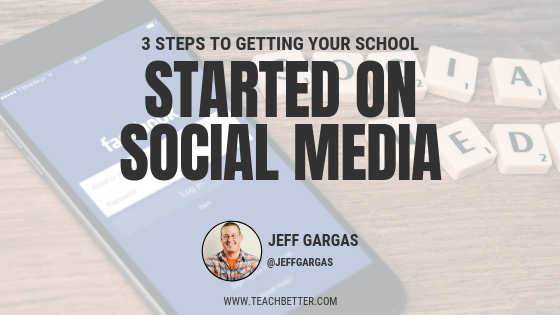Can we all just agree that our students and stakeholders are on social media?
Social media has been around for a while now (the first being “Six Degrees” launched in 1997) and I think it’s safe to say it’s here to stay. The platforms may change, what we do on them will change, but as for people utilizing social media…that’s not ending any time soon.
So as the old saying goes, “If you want to catch fish, fish where the fish are.” In this case, the “fish” are your students and stakeholders. And to “catch” them is to engage with them, to communicate with them, and to keep them updated.
If you want to communicate and engage with your students, parents, and community members, you need to go where they are. The same goes for marketing to prospective parents and students. You can post regularly on all your social media profiles, showing them the school facilities, update on school activities and upcoming events. Also, note that posting the same content on different platforms can be easier when you use a social media scheduling platform. Such tools can also edit the posts in bulk, and help you visualize exactly how schedule Instagram posts will appear on your Instagram or Facebook Grid.
So, while you might still be asking, “why should our school be on social media?” what I think you should be asking is, “Why aren’t we already on social media?”
Why you SHOULD be on social media.
In case you need a little more incentive to consider getting your school active on social media, let’s look at a couple stats. More than 3.19 BILLION people are active on social media. That means 79% of all internet users in the world utilize social media to engage with each other, explore products and services, and learn new things. That’s a 10% increase from last year, which shows us that it is continue to trend upwards.
Whether or not you use social media yourself, school leaders need to recognize that the vast majority of your community is using it on a regular basis. Studies show that 74% of American adults are on social media, and 81% of teenagers (12-17 yrs old) are regularly active on social media as well.
So why isn’t your school on social media?
The most common reason we hear from districts is the fear of privacy risks, worry of misuse by staff, and the general lack of understanding of how to use it. This is all understandable. There are privacy risks, we’ve all seen stories of teachers getting in hot water with a ill-advised Instagram post, and as a school leader, you have a lot of your plate.
But your audience is still on there. They know how to use it. They are comfortable using it. So why not harness that power and put the right information in front of them, via a medium they already know and love?
Let’s take a look at 3 simple steps you can take to get your school up and running on social media.
Step One: Create a Social Media Policy
Safety and security first! Before you even create your first school account, get your team together and lay down some guidelines and expectations. Make sue everyone agrees on the “rules of engagement.”
Start by asking yourself a couple questions:
- Does our staff know how to responsibly engage and interact with our students, parents, and community on social media?
- Do our students know to how appropriately use social platforms?
- What systems should we put in place to make sure the content we share on social media best reflects our school’s values?
- How can we utilize social media to continue toward meeting our goal of effective communication with out community?
Next, start to create guidelines for students and teachers using social media. These guidelines should direct them to use social networking responsibly. They should identify what the purpose is of incorporating social media into your school, what goals you hope to achieve through it’s utilization, and a list of expectation for professional conduct on social sites.
Educate yourself, your staff, and your students on positive social media practices, such as:
- Reviewing privacy policy and settings to protect yourself and others.
- Be kind and respectful to others while on social media.
- Before posting or sharing anything on social media, consider all potential consequences it may have.
We strongly recommend working with your staff and students to create these policies. Ask questions, gather opinions and ideas, and get everyone on the same page. A school that works together to create a strong, clearly communicated, and understood social media policy, sets itself up for successful integration.
Step Two: Set Up Your Social Profiles
One of the most common mistakes we see schools make is trying to get on every social media site out there, all at once. Unless you have a group of your staff that is dedicated to managing these platforms, start small. Find the platform that makes the most sense for you. Maybe it’s the one that a bunch of your teachers are really familiar with. Or, do a quick survey of your audience – Ask parents, community members, and students which social sites the use most often. Pick one to start with, get it embedded into your school’s routines, and then go from there.
Here are the 4 largest social media platforms:
- Facebook: Easily the biggest and most widely used platform. People of all ages utilize Facebook to keep in touch with family, stay up to date on what’s happening with friends, and connecting with colleagues. You can create a business page for your school to deliver important information to your community, or utilize their private groups for individual classes, athletic teams, or clubs.
- Twitter: A fast-moving platform with a limit of 280 characters per “Tweet.” Twitter is an extremely popular platform amongst educators, with Twitter Chats becoming more and more common as an additional source for PD. This platform also allows for quick information delivery to parents and students, and offers a wide variety of unique and engaging ways to incorporate it into any classroom.
- Pinterest: If your community is a more “visual” crowd, Pinterest in a great way to communicate through “Pins” of awesome pictures, classroom projects, and online resources. This is a image-based platform, with less room for lines of text to deliver information, but followers can re-pin your images and help to spread announcements around quickly.
- Instagram: This one is all about the photos! Instagram (IG) is a mobile-based platform, so you’ll typically utilize it directly from the app on your phone. As they say, “a picture is worth a thousand words,” so you can go beyond simply telling your community about that awesome event you just held, and show them. With the addition of Instagram “Stories” and live video, the opportunities to create engagement on IG are endless.
Two others you may want to consider are LinkedIn, and any sort of blogging platform.
- LinkedIn is more about connecting with other educators than it is about communicating with students or stakeholders.
- Blogging is a great way to communicate with parents, announce exciting school news and success stories, and it is a great way to increase your school’s visibility in search results. It’s also a great way to create content to share across social media.
Protect yourself
We’ve all clicked through that massive “Terms & Conditions” page numerous times, on the new app we downloaded, the online store we just signed up on, and almost certainly on the social media platforms we’re on for personal use. But when it comes to your school, slow down…read the terms, understand the terms and conditions, and explore the privacy options available on every platform.
Most platforms offer a plethora of ways to protect yourself and your data. Research them, and use them. Social media can be extremely powerful…when used safely.
Brand your profiles
Simply creating a Facebook page doesn’t do much without making it your own. Find a high-resolution banner image that represents your school and how you want people to feel when they visit your page. Then make sure your page profile picture clearly shows people who the age belongs to. Your school logo, crest, or mascot is a good option here.
(Here’s a nice resource for the best sizes for all these images.)
Be sure to complete your profile with any relevant information people may be looking for:
- Links to your website and other social media accounts
- Contact information, such as your address, email, and phone numbers
- A short “bio” or “about” blurb, letting people know what your school is all about. Your school’s mission and vision work well here as well.
Step Three: Get Started
Now that you’ve created a social media profile (or several), you need to start using it. It is not worth much without being active on it. Lay out a plan of what type of content you want to share, and what your “voice” will be on social media.
- Who is your target audience on social media? Students? Parents? Your community? All of the above?
- Are you simply sharing important information with your stakeholders, or are you looking to engage students and get your community more involved?
- Are you going to keep it serious, or go the fun route and look to entertain with witty memes, GIFs, and videos?
- Regardless of the voice you choose to use, be sure to include pictures and videos as often as possible, as posts with different types of media in them tend to perform better than those with only text.
Build your audience
As you lay out your content plan, you need to start building your audience. Send emails and take-home announcements to parents, letting them know where to find you on social media. Run an ad in the local paper, encouraging community members to connect with you. Get some stickers made with your social profiles on them and pass them out at school events. And of course, link to your new social sites from your school website. Anything you can do to spread the word that you are now utilizing social media to communicate and share things with your audience, do it.
You can also build your audience by connecting with others on social media. Follow other schools on Twitter and Instagram, Like their pages on Facebook, connect with them on LinkedIn, and Re-Pin their stuff on Pinterest. Share ideas, comment on posts, and build those relationships! When we all come together to grow and be better, we’re stronger.
Engage with people
It’s not enough to simply put out information. It’s called “social” media for a reason…be social on it! Ask questions, run polls, and engage in conversations with people that follow you or like your page. Pay attention to people commenting on your post, and keep those conversations going. Listen to your audience. Social media provides you with real-time data on how your community is reacting to, and feeling about your school and the things you’re doing. By engaging regularly with people, you can generate yourself some incredible feedback and continue to improve your school.
Whether you choose to start using social media this week, or you’ve already been on it for a while now, the most important thing to remember is that your audience is almost certainly active on social media, and as long as you plan it out, protect yourself, and use it appropriately, it can be an extremely effective tool for communication, collaboration, and engagement.
Tweet at me (@jeffgargas) and let me know how your school is utilizing social media!
Blog image photo by William Iven on Unsplash.




